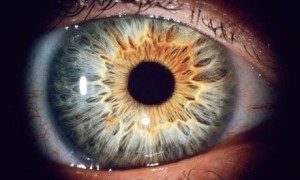By the guardian.co.uk
We take it for granted that we see the world as it actually is, but in fact, we do not. Our perception of the world is the brain’s best guess at what is actually happening, based on the information it receives through the senses. Optical illusions clearly demonstrate that the brain does not always interpret sensory information correctly, by producing a discrepancy between what we see and and how we perceive.
These discrepancies usually occur because the visual information is incomplete and the brain has to fill in the gaps. But our perceptions can be influenced by many factors, even under normal circumstances – we know, for example, that how we feel affects what we see, and that music affects how we perceive facial expressions.
A new study now shows that visual working memory can influence our perceptions, so that mental images in the mind’s eye can alter the way we see things.
[pro_ad_display_adzone id=”110028″]
Working memory refers to our ability to hold and manipulate limited amounts of information for a short period of time. This information is usually relevant to the task at hand – when making a phone call, for example, you might repeat the number to yourself several times until you have dialled it; once you’ve dialled the number, you stop the repetition and then quickly forget it. In exactly the same way, visual working memory allows us to retain visual information as mental images in the mind’s eye.
Two previous studies, published in 2009, showed that the contents of visual working memory are represented in a region of the brain devoted to vision, and can be predicted accurately by decoding the activity in that region. These findings suggest that the brain mechanisms responsible for perception and working memory are closely linked, and prompted Min-Suk Kang and his colleagues at Vanderbilt’s Visual Cognition Neuroscience Lab to investigate whether information retained in visual working memory can change the appearance of the things we see.
To do so, they used an optical illusion called motion repulsion, in which the angle between two objects moving in different directions appears to be exaggerated. The participants were shown two patterns of moving dots, one after the other and each moving in a different direction, and told that they had to remember the direction in which the first one was moving. They were then asked to judge whether the motion of the second pattern was clockwise or counterclockwise, relative to the first, and to indicate the direction of motion of the first pattern.
The participants consistently reported that they perceived a clockwise-shift in the direction of the second pattern. One possible explanation for these findings is that they were caused by a motion after-effect. Motion after-effects occur after looking at a moving stimulus for several seconds and then shifting your gaze to a stationary one, which then appears to move in the opposite direction to the first. But the patterns of dots were shown for just half a second, which is not long enough to produce an after-effect; furthermore, an after-effect would be expected to produce the illusion that the second pattern of dots is moving in the opposite direction to the first, which was not the case.
The researchers performed several variations of the experiment to rule out other possible explanations, such as involuntary eye movements and visual priming, and reached the conclusion that the contents of working memory can contaminate perceptual processes. The participants had to remember the first pattern of dots, and retained a mental image of its direction of motion in their visual working memory. This mental representation altered their perceptions of the second pattern, by “pushing” the motion of the dots away from the true direction.
The study provides evidence that visual working memory and perception interact with each other, and this may be because the same brain machinery is co-opted for both processes. The earlier work seems to confirm this by showing that the contents of visual working memory are encoded in the visual cortex and can be retained there for several seconds.
The findings may have important practical implications for everyday life. For example, we often rehash mental imagery while engaging in visually guided tasks such as driving. This study suggests that doing so may interfere with our ability to register and react to objects in our visual field.
Reference
Kang, M-N, et al (2011) Visual working memory contaminates perception. Psychonomic Bulletin Review. DOI: 10.3758/s13423-011-0126-5
[pro_ad_display_adzone id=”110027″]







